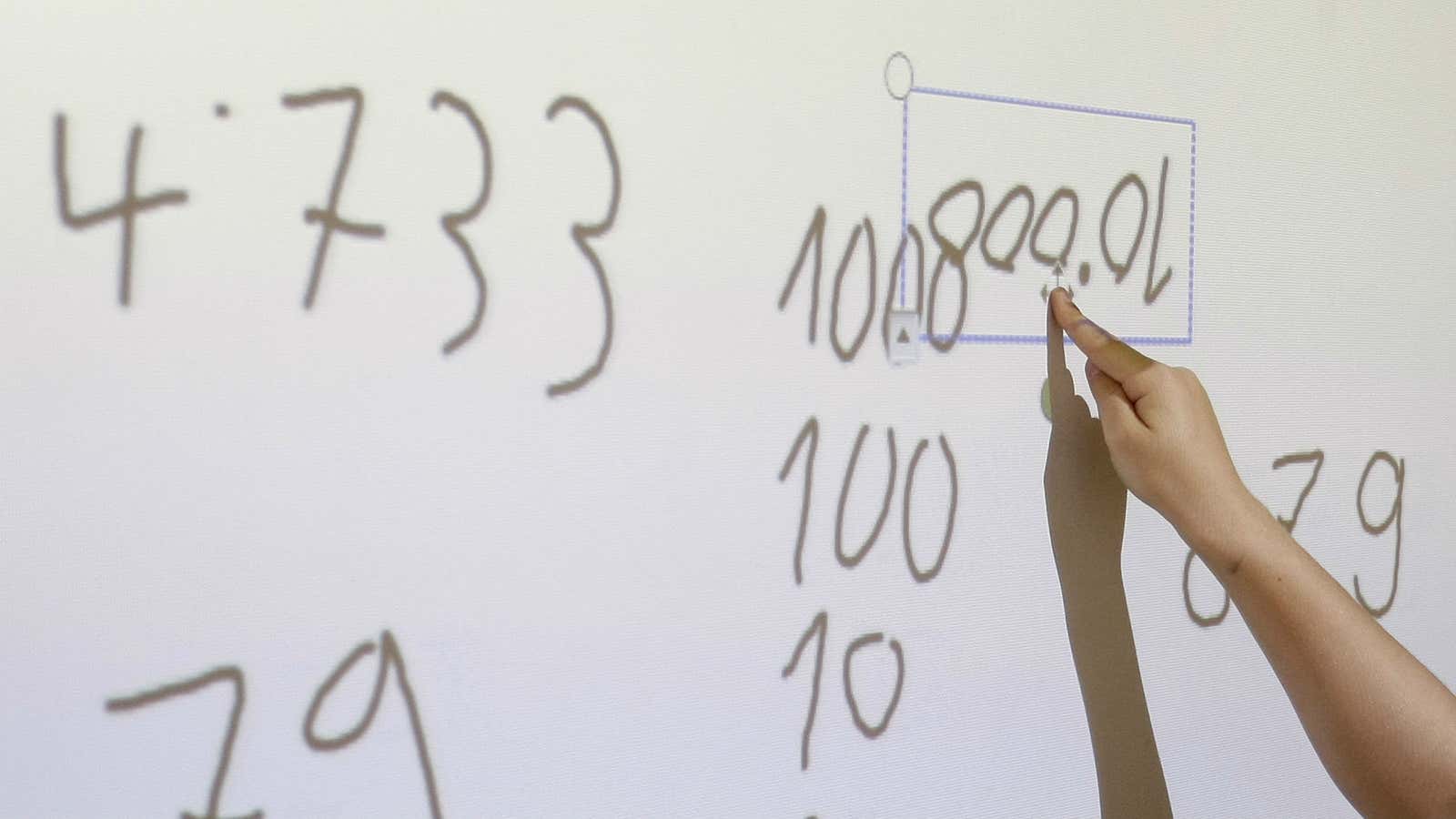For the most part, the human body works like a machine. Each of our organs carries out a specific task, like digesting or delivering nutrients, and from person to person, these organs are or more or less the same.
The brain may be different. Depending on an individual’s experiences and perceptions, parts of the brain may take over different tasks as needed.
According to research (paywall) from Johns Hopkins University, blind individuals use both their numerical and visual processing areas of the brain when asked to perform basic algebra. When sighted participants did similar problems, they appeared to only use the part of the brain associated with numerical computation. The scientists concluded that our personal experiences may influence which parts of the brain carry out numerical tasks.
The researchers recruited 17 patients who were blind from birth and 19 patients who could see, but whose eyes were covered for the experiment. They asked the participants simple algebraic equations comparing two variables, like: If 7 − 2 = x and 6 − 1 = x, is x the same? These questions increased with difficulty slightly, to using double-digit numbers, and the researchers also asked a set of non-math questions (about the meaning of two different sentences) to serve as a control.
While they asked these questions to participants, the researchers took images of their brains using functional magnetic resonance imaging to look at which parts of the brains were using more oxygen (i.e., were more active and thus required more energy). They found that blind individuals used brain cells associated with basic visual processing (like noticing color contrast) when doing math, and used more of them as the math became more difficult. Sighted patients relied only on the part of the brain understood to play a primary role in numerical processing.
Previous work has shown that when a person lacks one sense, the brain can reallocate some of the area associated with that sense for other kinds of processing: For example, some patients who are blind appear (paywall) to use the visual parts of their brain when processing different sounds. This is called cross-modal plasticity.
Although this study was small, it is the first to show that parts of the brain associated with recognizing sensory input may be able to carry out completely unrelated tasks. “The big takeaway is that the brain is really flexible but also really resilient,”Shipra Kanjlia, a graduate student in psychology at Johns Hopkins and lead author of the paper, told the Atlantic.
If this is true, it opens the door for new therapies for patients who have lost brain function, either through injury or illness, Marina Bendy, a psychologist at Johns Hopkins and another author of the paper, told NPR.
An earlier version of this story listed incorrect university affiliations for the study’s authors.
